
 |
St. Mark's Church is at the junction of St. Mark's Road
and Chapel Ash. The church was built in 1848-9 by C. W. Orford and was
converted to office use in 1990. St. Marks Road was at the edge of an
area of dense housing which extended across Great Brickkiln Street to
Penn Fields. The town's population increased dramatically in the late
19th century through to the later years of the 20th century as people
moved into the town to take advantage of the many jobs that were
available in local industry. Several areas of dense housing were built
to cater for the new population and this was one of them. The population
was 7,454 in 1750 and there were 1440 houses in the town. By 1788 it had
increased to 11,386 people and 2770 houses, an increase of greater than
50%. Great Brickkiln street was developed in the late 1870s and the
houses spread to cover a large area. By 1871 the population had
increased to 68,291 with 13,272 houses. |
This dramatic growth slowed down during the later years
of the 20th century:
| year |
population |
number of
houses |
| 1871 |
68,291 |
13,272 |
| 1881 |
75,766 |
14,470 |
| 1891 |
82,662 |
16,089 |
| 1901 |
94,187 |
19,277 |
The photograph shows Lord Street, looking towards Chapel Ash. It was
taken in the early 1970s.
|
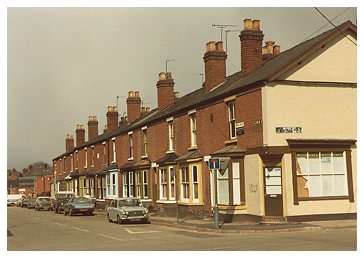 |
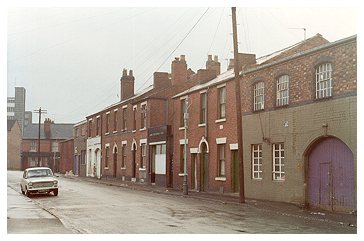 |
This view is looking up Lord Street towards Great
Brickkiln Street. The single storey building in the centre is a café.
The building with the ground floor painted white is occupied by Smith's
Radio Limited's service department. The company's shop was on the corner
of Temple Street and Worcester Street. Smiths also had a hi-fi and
camera shop in Victoria Street, which moved from Worcester Street. The
building is also occupied by Fretsonic Sound Equipment. |
The last building on the right was occupied by Premier
Tool Makers.
| This photograph shows the junction of St. Mark's
Road and Lord Street. The housing in St. Mark's Road consisted mainly of
terraces, but there were also up-market detached properties as can be
seen in the house with the large bay windows. This is a typical view of
the area, most streets looking almost identical. |
 |
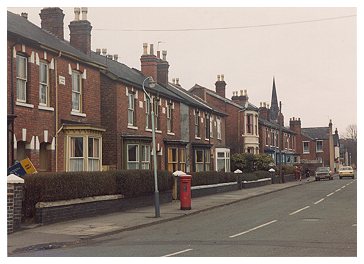 |
The view looking back down St. Mark's Road towards the
Lord Street junction. St. Mark's Church can be seen in the distance. |
| Another view from St. Mark's Road, looking towards Lord
Street. St. Peter's Church tower can be seen on the far left above the
white-fronted building which was a part of Charles Clark's car repairs
and parts business. On the far right is Cherry Street which joins Great
Brickkiln Street. |
 |
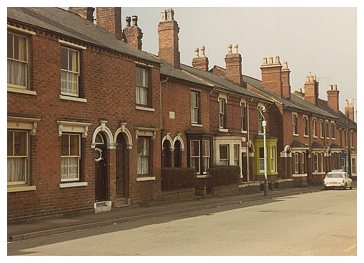 |
Another view of Lord Street which shows some of the
typical terraced housing. |
| A final view of St. Mark's Road showing the variety of
terraced housing in the area. |
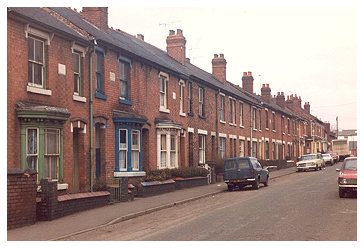 |
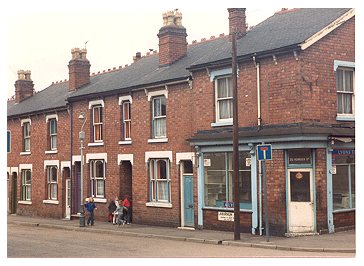 |
Looking along Laburnum Street from the junction with
Humber Road. This shows one of the many corner shops that were a feature
in the area. |

|
|

|
|

|
| Return to the
City Centre |
|
Return to the
beginning |
|
Proceed to Great
Brickkiln Street |
|